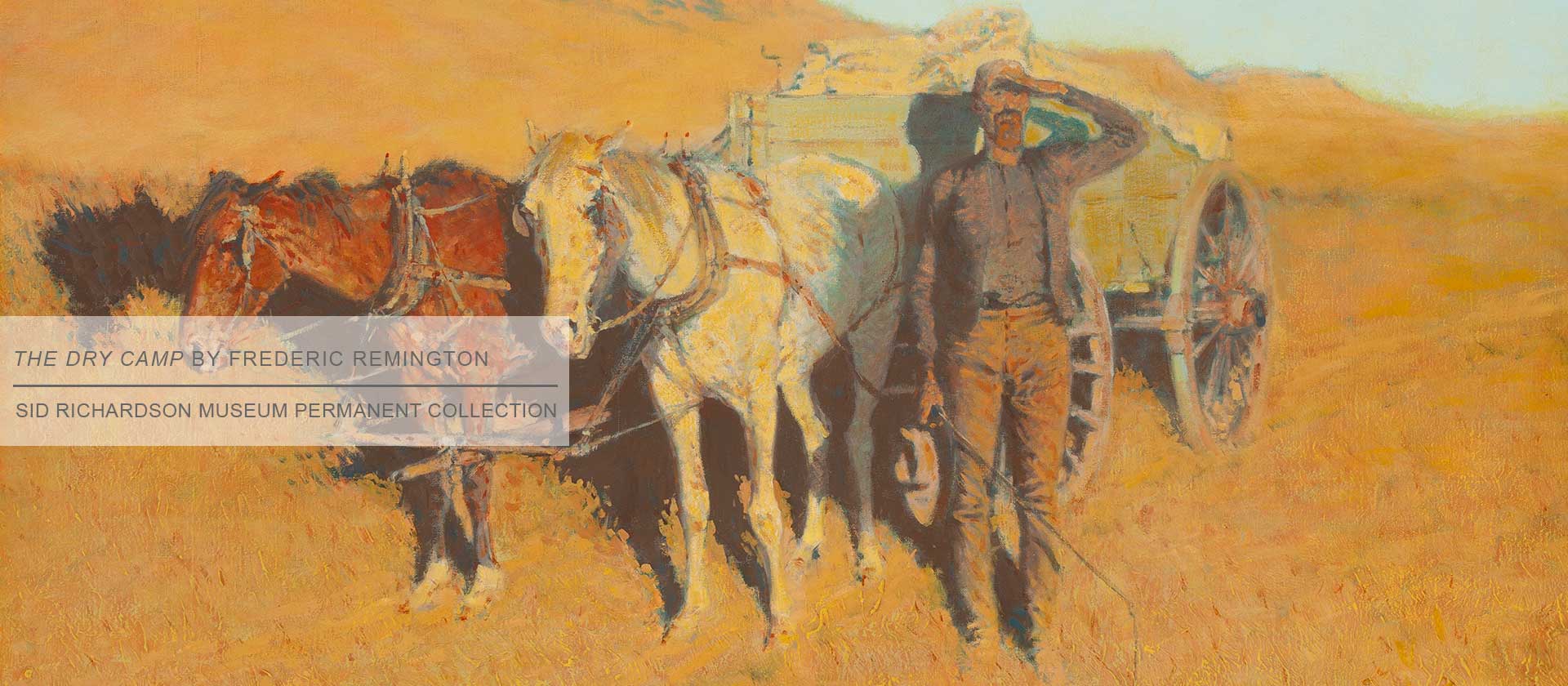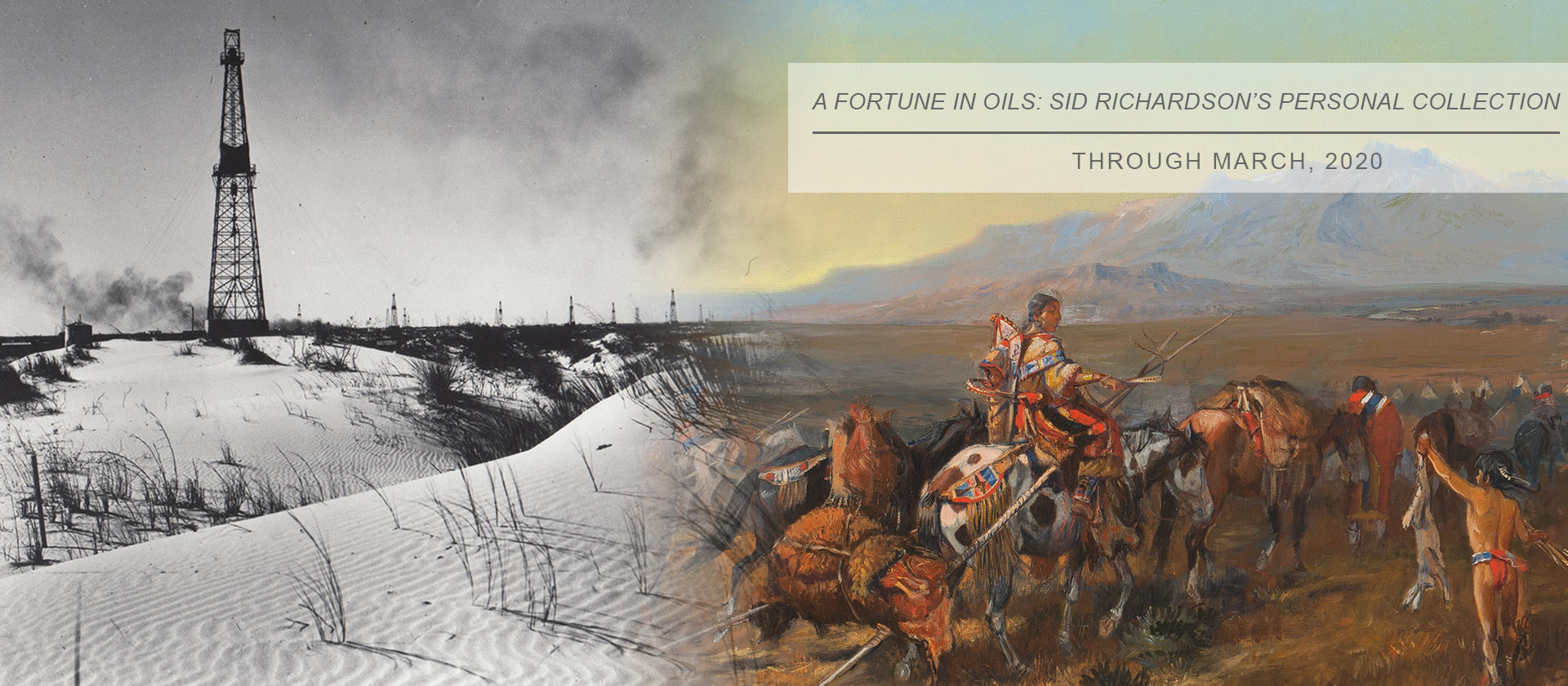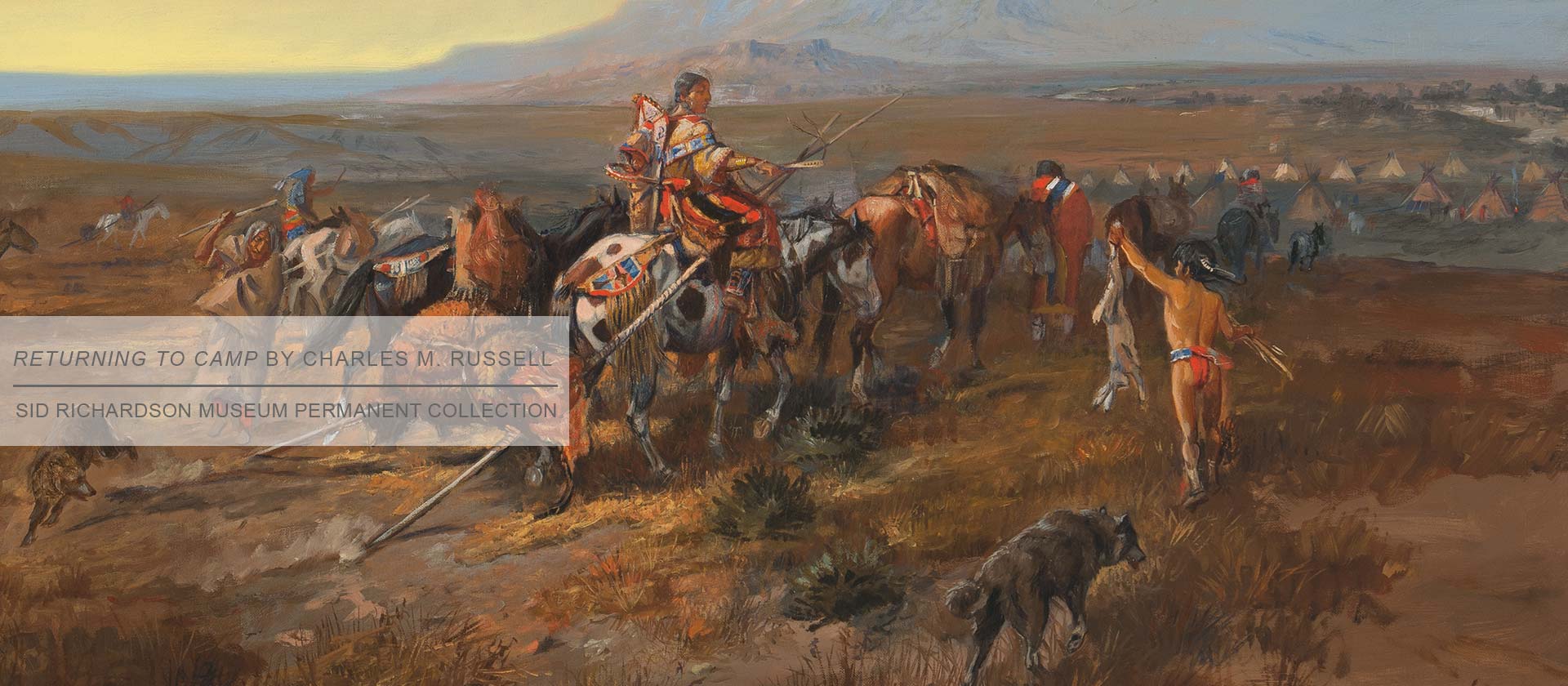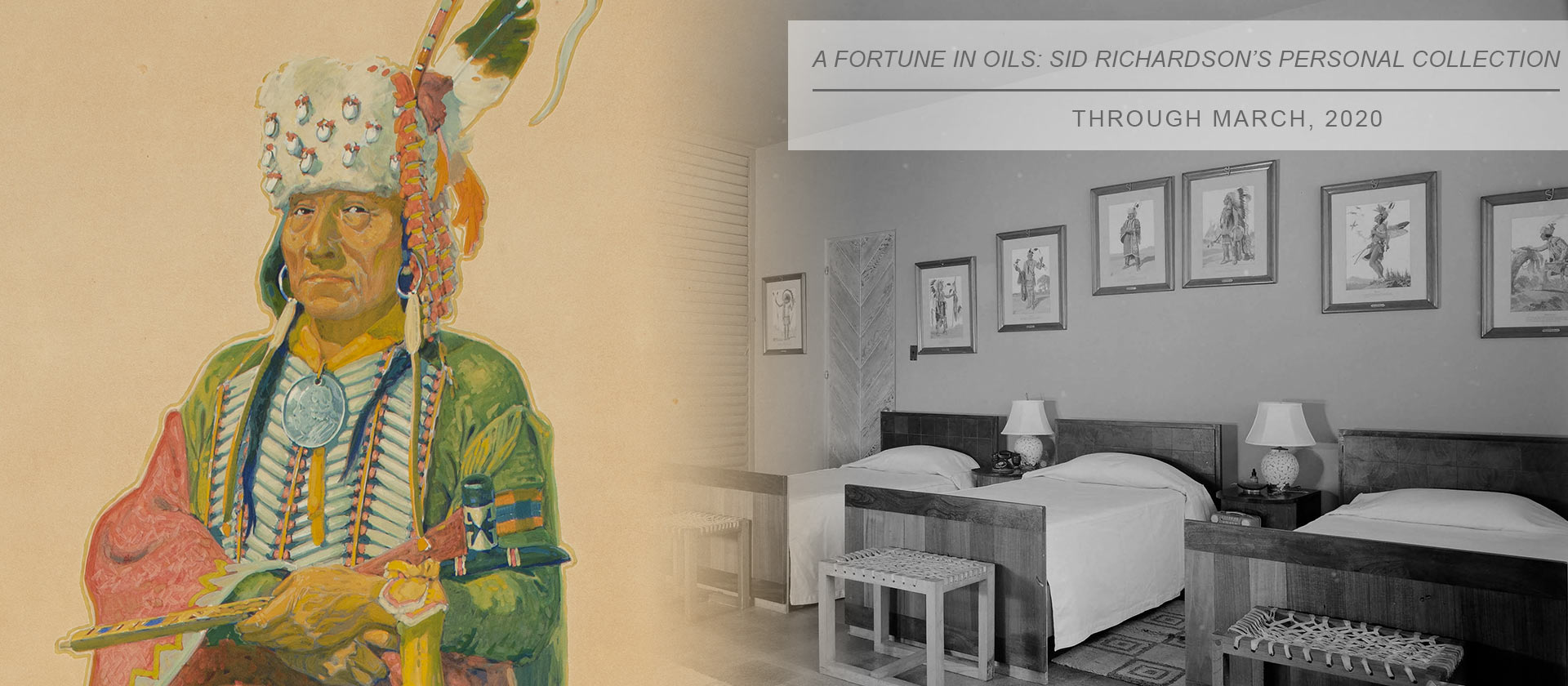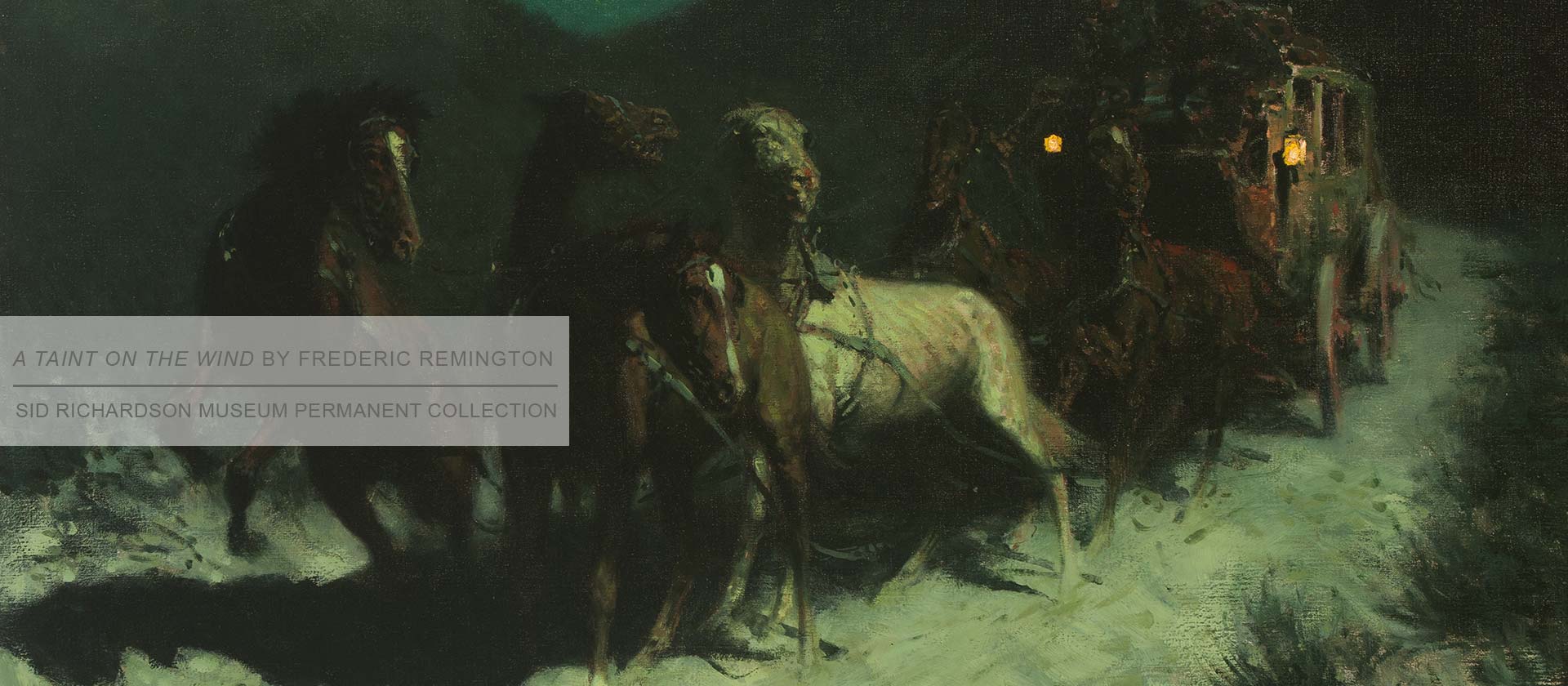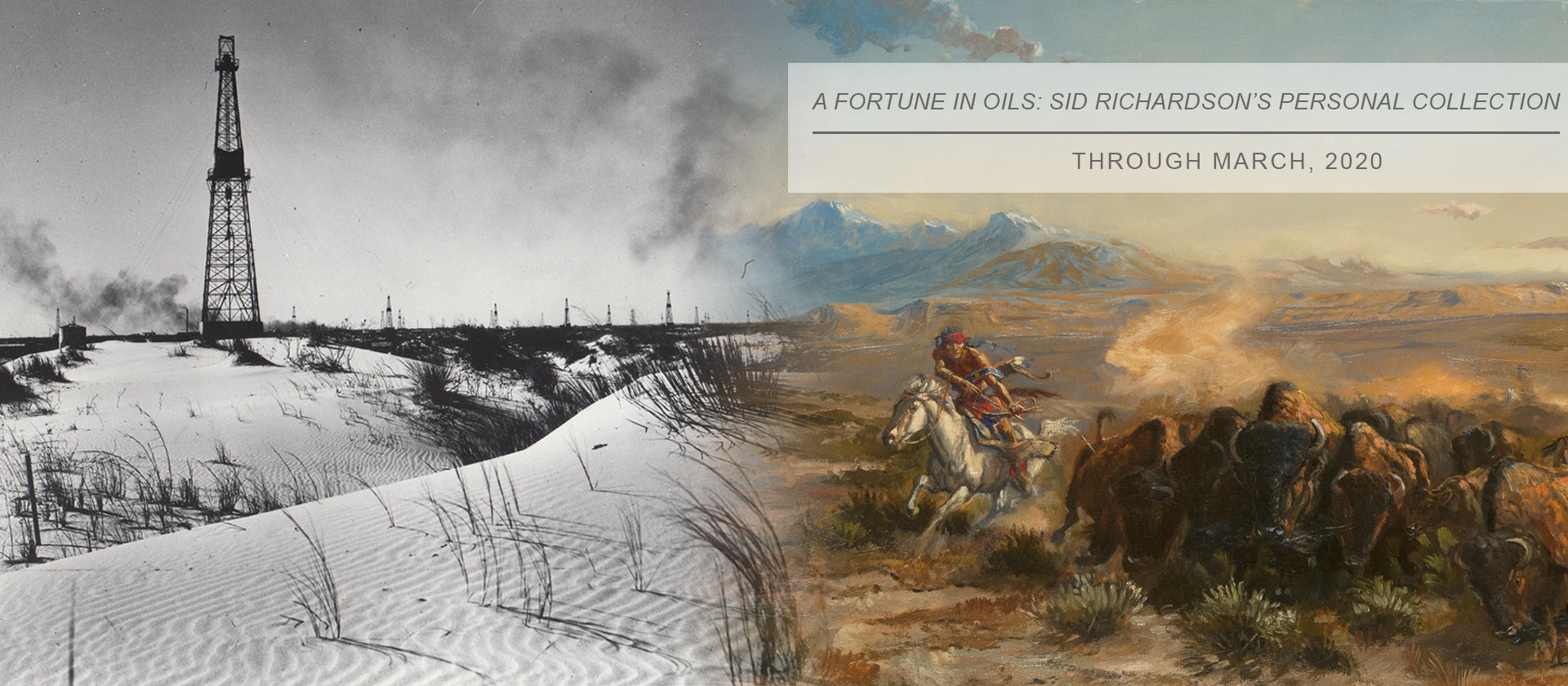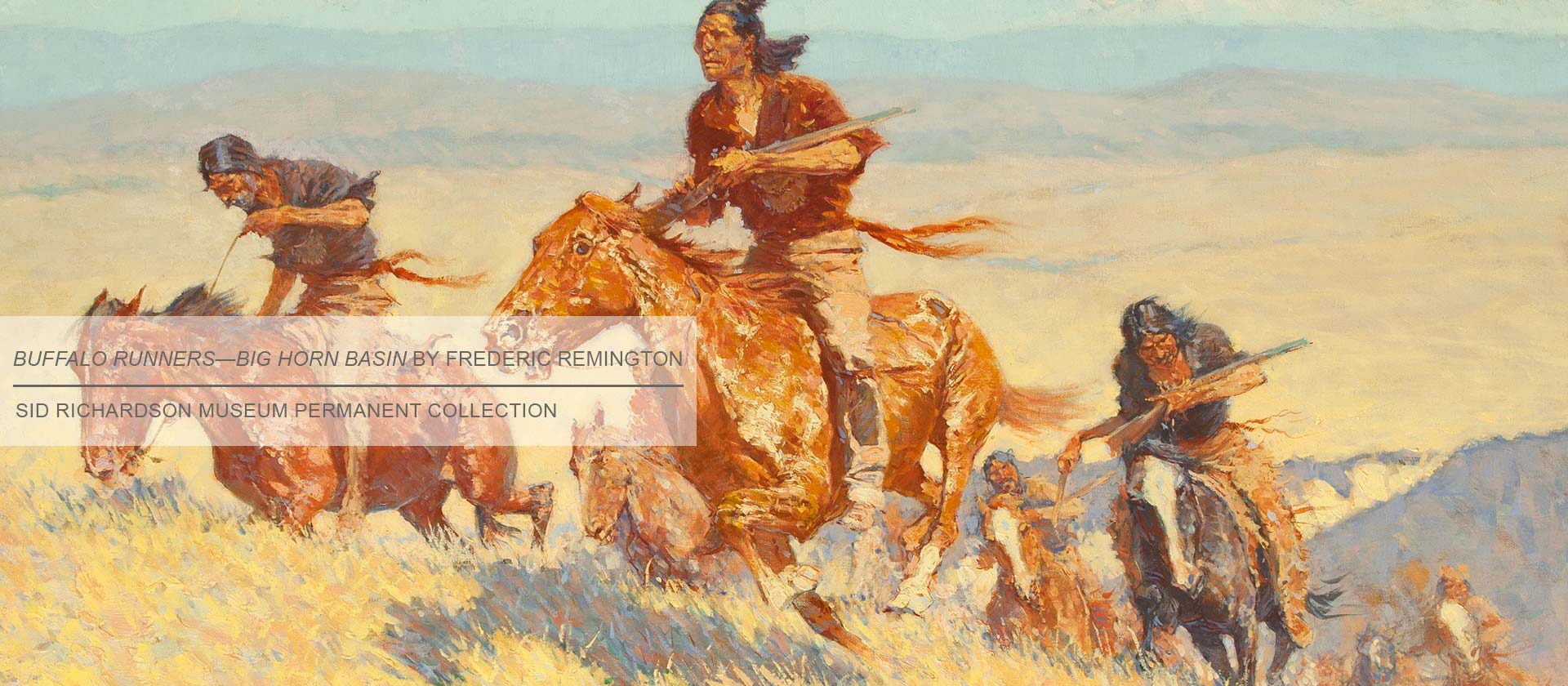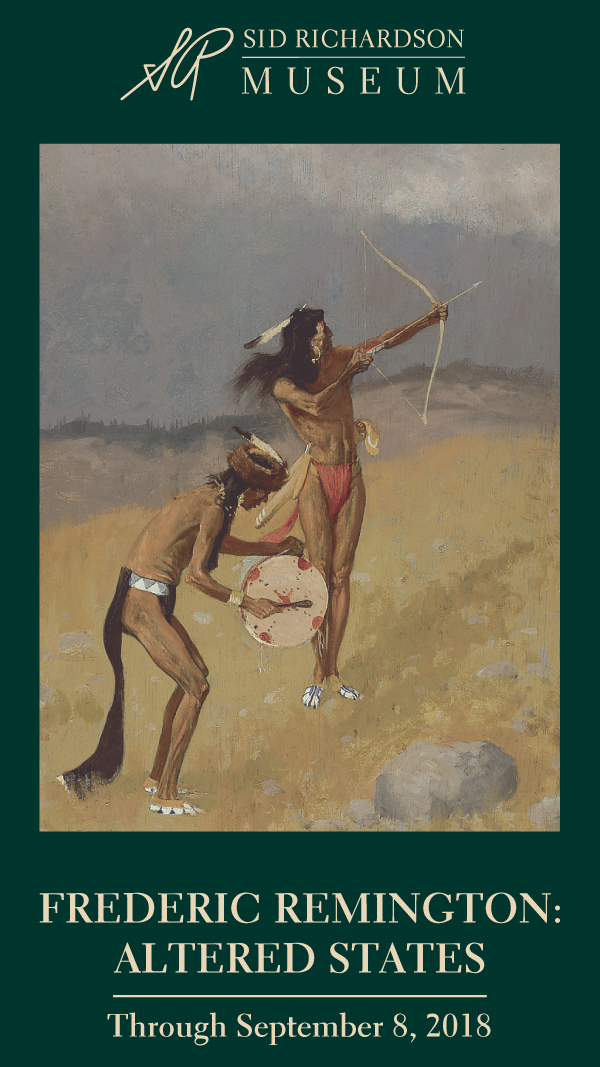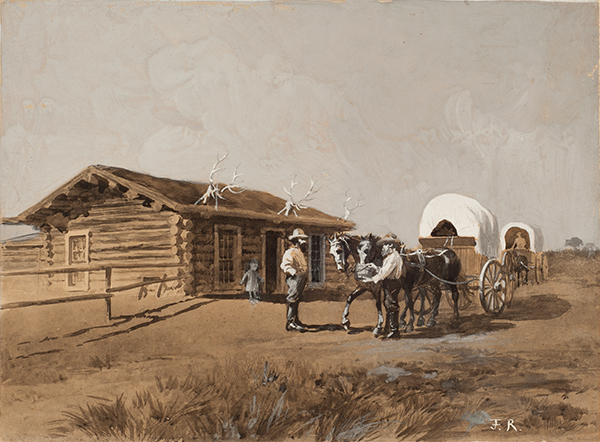Frederic Remington: Altered States | through September 8, 2018
This exhibition tells the provocative story of three paintings from the museum’s collection that were altered after completion: one demonstrates an artist’s change, one demonstrates fraudulency, and one remains a mystery.
The subject of fakes and forgeries is one that is not only prevalent in art museums but is also pervasive in our day-to-day lives. Just as society continues to improve methods for contending with issues of counterfeit, the art world has yet to develop a foolproof system for authenticating works.
“This is an exhibition for anyone who loves a mystery,” says Mary Burke, director of the Sid Richardson Museum. “It’s also an opportunity to see into the mind of an artist and observe the ways in which Remington sought to improve his compositions.”
Frederic Remington: Altered States features artworks with alterations made either by the artist, or by others, and explores the ways in which scholarship and scientific conservation methods have contributed to the discovery of those alterations. Frederic Remington: Altered States is one in a series of the Sid Richardson Museum’s Guests of Honor focus exhibitions that assemble a small selection from the permanent collection with loaned works from other collections. This particular exhibition mines three Remington paintings from the museum’s own collection, supported with two loaned books from the Rick and Murfy Stewart Collection and two loaned bronzes from a private collection to demonstrate the ways in which the artist and others modified Remington’s work.
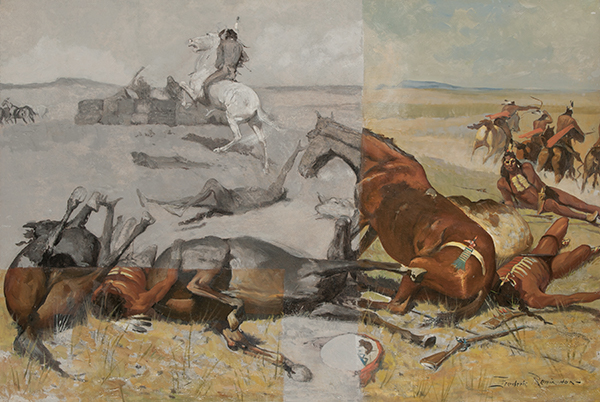
How do scholars authenticate works of art
How do scholars discern the fakes and forgeries from Remington’s authentic works and reworked compositions? The current system relies on a three-tier approach of connoisseurship (an expert verifying that the work reflects the artist’s style and technique), provenance (the history of an artwork’s ownership) and scientific analysis. For example, He Rushed the Pony Right to the Barricade (ca. 1900) is a black-and-white oil painting that was published in Remington’s novel, The Way of an Indian. Much later, someone other than the artist painted over the canvas with color. Through a combined effort of connoisseurship and science, the overpainting was discovered. Remington scholar Peter Hassrick thought the color palette and brushwork of He Rushed the Pony Right to the Barricade did not appear to be Remington’s, yet areas such as the signature, which appears to be painted around, looked original. The Sid Richardson Museum sent a small cross-section of the painting to a research laboratory, whose examination revealed two layers of paint separated by a layer of dirt – indicating that several years had elapsed between the applications. Further analysis of the colored layer determined that this paint was not produced until about 22 years after Remington’s death, confirming that the alteration was made by someone other than the artist. Today, viewers can see part of the painting’s original layer after a section of the color painting was removed. The altered painting is displayed in the gallery with an edition of the book in which the original illustration appears.
Other artworks displayed in Frederic Remington: Altered States went through a similar process in order to determine the truth about the work’s authenticity. Is it real or is it a fake? Opportunities for comparison include Remington’s painting The Thunder-Fighters Would Take Their Bows and Arrows, Their Guns, Their Magic Drum. Originally produced to illustrate the 1892 edition of Francis Parkman’s book The Oregon Trail: Sketches of Prairie and Rocky-Mountain Life, the painting on exhibit has a different number of figures than that of the illustration. A displayed edition of Parkman’s The Oregon Trail allows visitors to see how Remington reworked the composition in order to remarket his painting. The Way Post, (ca. 1881), a watercolor and gouache on paper, is signed with initials using a signature style Frederic Remington used occasionally as a young artist. However, conservation studies suggest that the signature initials were applied at a later date, possibly by someone else.
In addition to the three paintings, visitors can examine two different castings of Remington’s bronze The Rattlesnake. With a preference for refining his work, Remington often modified his bronze casts, and in the case of The Rattlesnake, after eleven castings of the smaller model were produced, Remington significantly altered and enlarged the sculpture.
